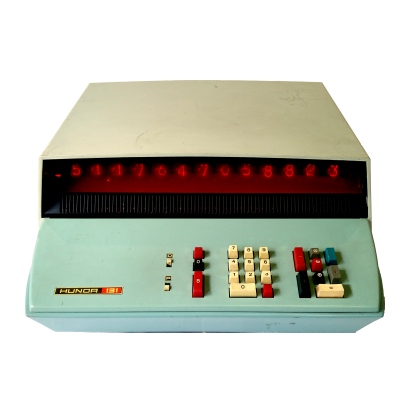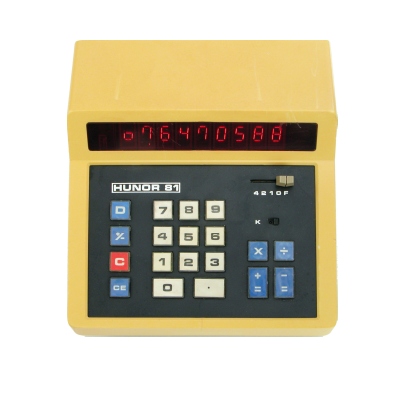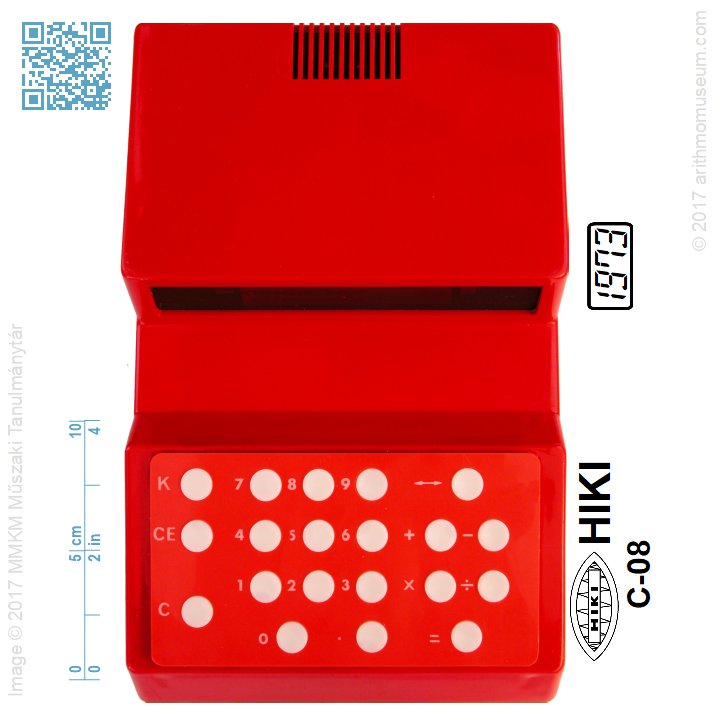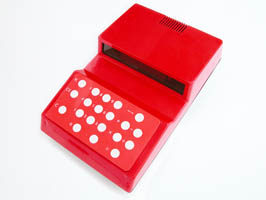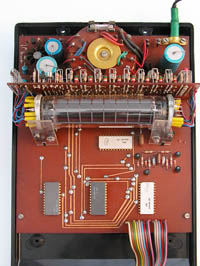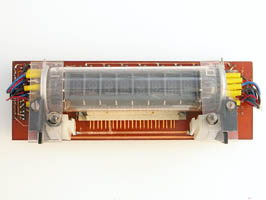HIKI C-08
Brief History
The hungarian Híradástechnikai Ipari Kutató Intézet (HIKI, Telecommunication Industry Research Institute) was developing RTL integrated circuit production technology from 1967 for EIVRT (Tungsram), then newer technologies have been researched there. The dutch Philips was one of the largest IC manufacturer in Europe in these days, so it manufactured calculator chipsets for a lot of companies. Using these circuits and Philips' multi-digit Nixie tube (named Pandicon-tube) an experimental 8-digit calculator was developed in 1971. EMG looked for a ready solution to replacing the obsolete HUNOR 157-158 calculators with a state-of-the-art LSI equipment, so mass production of the HIKI C-08 had planned. Due to high import part percentage - most of its components were from western companies - EMG constructed the HUNOR 81 model without HIKI-cooperation. The research institute made a series of the 8-digit C-08 and 10-digit C-10 models in 1973, which were sold in domestic markets.
Due to poor quality and lack of a power (mains) switch it didn't became a success, after a few months, most of these calculators were out of order.
| Manufacturer: | Híradástechnikai Ipari Kutató Intézet (Hungary) |
| Mfg. date: | 1973 |
| Size: | 17,1×27,2×7,8 cm |
| Weight (ready for operate): | 1370 g |
| Type: | four-function desktop |
| Capacity: | 8 digits (input/display) 8 digits (internal precision) |
| Operating logic: | algebraic |
| CPU: | Philips FDY130+140+190B+200B |
| Registers: | 2 standard (with saving the pending operation) 1 constant (with saving the pending operation) |
| Features: | Ffloating-point notation |
| Display: | 8 digit Pandicon (Philips ZM1206) |
| Power: | 220V AC |
Similar items
